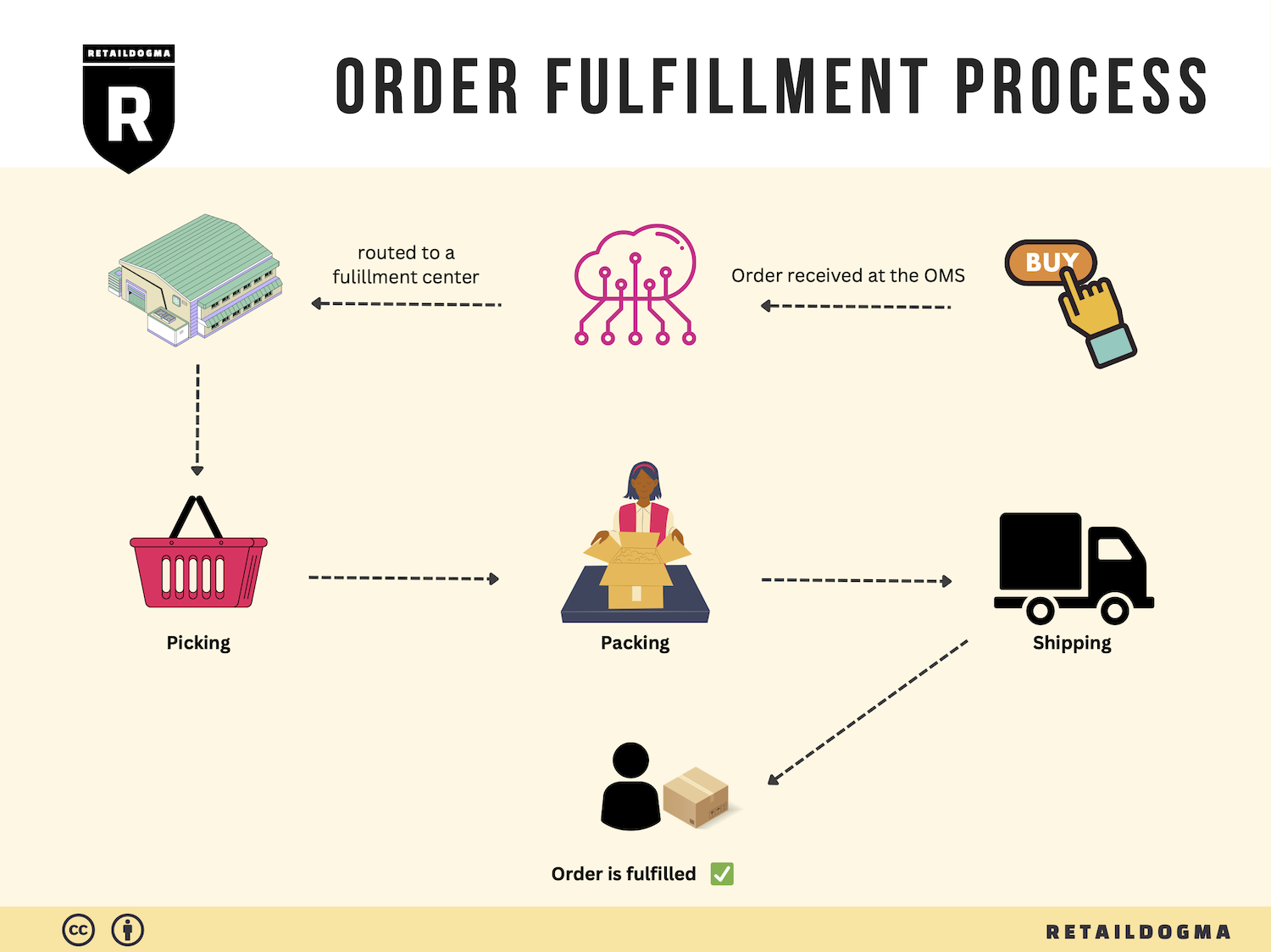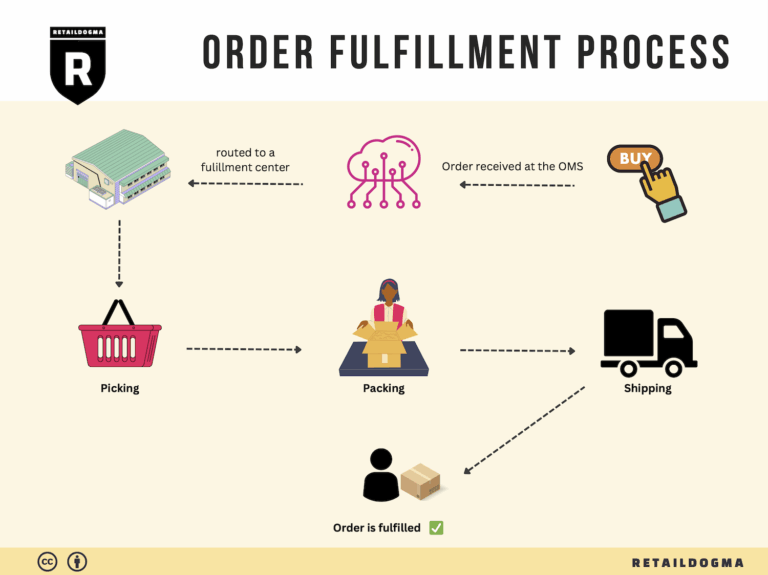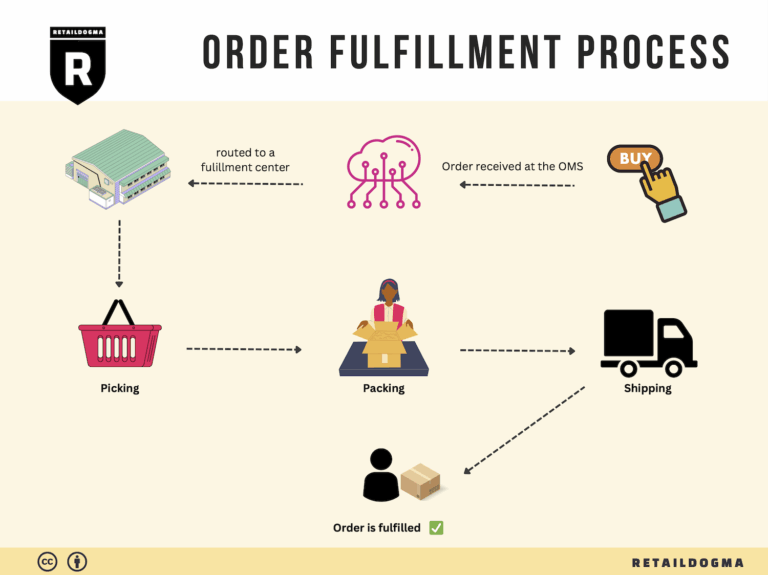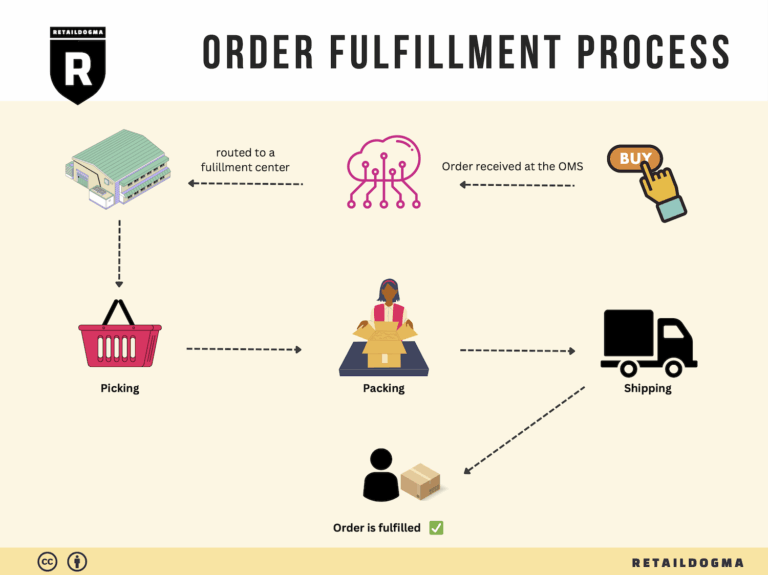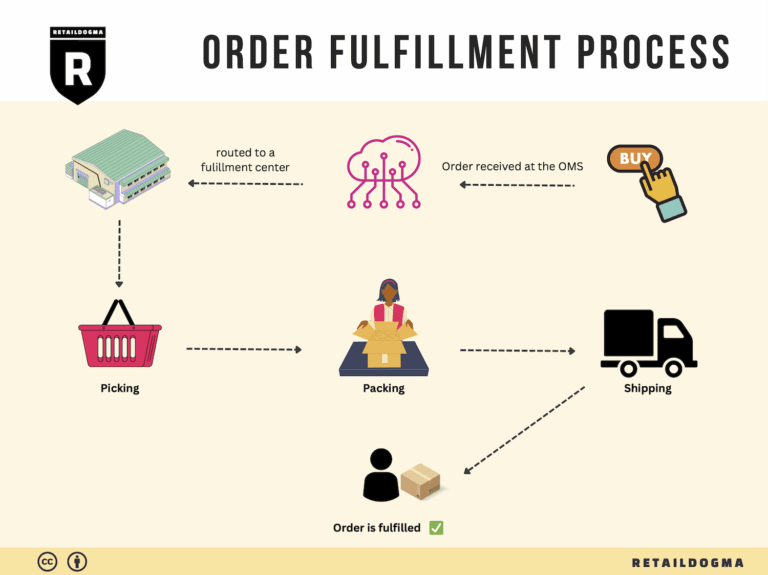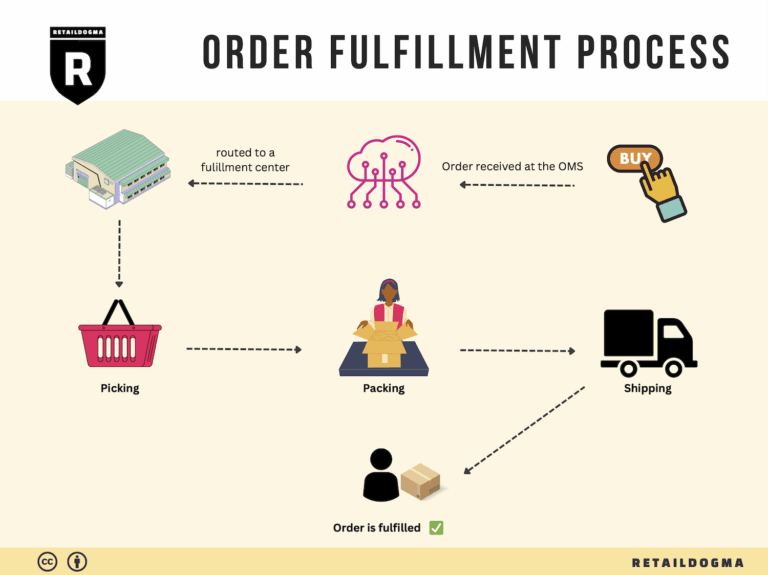Ecommerce Fulfillment Services: The Ultimate Guide (2025)
What is E-commerce Fulfillment? An Introduction for Growing Businesses
Understanding E-commerce Fulfillment: A Crucial Component for Growth
As an e-commerce business owner, you may find yourself grappling with the complexities of packing and shipping orders, especially as your sales begin to scale. This can quickly become overwhelming, detracting from your ability to focus on core business strategies such as marketing, product development, and customer engagement. Fulfillment—the process of getting a product from your inventory to your customer’s doorstep—can be a daunting task, but it is also a critical factor in your business’s success.
E-commerce fulfillment encompasses all the steps involved in processing and delivering orders. This includes receiving inventory, storing products, picking and packing orders, and shipping them to customers. For many growing businesses, the decision to outsource fulfillment to a third-party logistics provider (3PL) or utilize services like Fulfillment by Amazon (FBA) can be transformative. By leveraging these models, you can streamline operations, improve delivery speed, and enhance customer satisfaction.
In this guide, we will explore various fulfillment models, including the benefits and challenges associated with each. You’ll learn about third-party logistics (3PL) providers, which can handle everything from warehousing to shipping, and FBA, where Amazon takes care of storage, packaging, and shipping on your behalf. Understanding these options will help you make informed decisions that align with your business goals.
Additionally, we will cover the core services offered by fulfillment centers, such as inventory management, order processing, and returns handling. Knowing what services you require is essential for selecting the right fulfillment partner.
Choosing the right fulfillment partner is another critical decision you’ll face. We will outline key factors to consider, including location, technology integration, scalability, and pricing structures. Understanding these elements will empower you to find a partner that complements your operational needs and customer expectations.
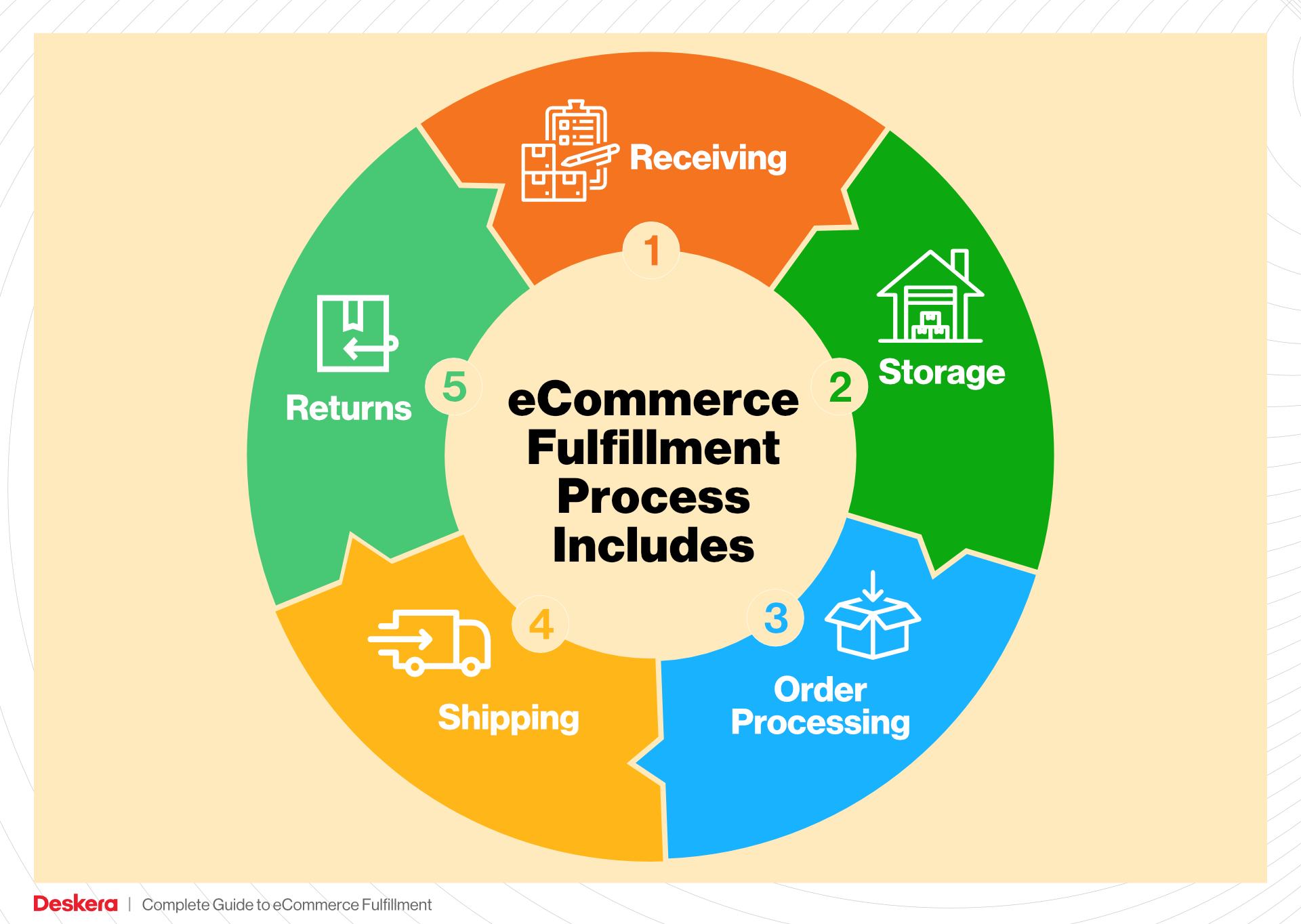
Finally, we will delve into pricing considerations for fulfillment services, helping you navigate potential costs and budget effectively.
The goal of this guide is to empower you with the knowledge needed to make smart, strategic decisions about your logistics. By understanding the intricacies of e-commerce fulfillment, you can enhance your operational efficiency and focus on what matters most—growing your business.
What You’ll Learn In This Guide
- What is E-commerce Fulfillment? An Introduction for Growing Businesses
- The Order Fulfillment Process: From ‘Buy’ Button to Customer’s Door
- Comparing Fulfillment Models: In-House vs. 3PL vs. Dropshipping
- A Deep Dive into Amazon FBA: Pros, Cons, and Who It’s For
- Core Services Offered by Fulfillment Centers
- How to Choose a Fulfillment Partner: A 6-Point Checklist
- Understanding Fulfillment Pricing: A Breakdown of Common Fees
- Frequently Asked Questions (FAQs) about Fulfillment
- Conclusion: Is Outsourcing Fulfillment the Right Move for Your Business?
- Important Disclaimer
The Order Fulfillment Process: From ‘Buy’ Button to Customer’s Door
1. Receiving Inventory
The order fulfillment process begins with receiving inventory at the fulfillment center. This step involves the acceptance of goods from suppliers, which are then checked against purchase orders to ensure accuracy. Each product is scanned and assigned a Stock Keeping Unit (SKU), a unique identifier that facilitates tracking and inventory management.
Importance: Proper receiving practices are crucial for maintaining accurate inventory levels and ensuring that the right products are available for order fulfillment. Discrepancies in this stage can lead to stockouts or overstock situations, which can negatively impact customer satisfaction and operational efficiency.
Key Term: SKU (Stock Keeping Unit) – A unique identifier assigned to each product that enables easy tracking and management of inventory.
2. Warehouse Storage
Once the inventory has been received and verified, it is stored in designated areas within the warehouse. This involves categorizing products and utilizing shelving systems that maximize space and accessibility. Efficient warehouse layout and organization are essential, as they directly impact the speed and efficiency of subsequent steps in the fulfillment process.
Importance: Proper storage strategies reduce the time spent searching for items and minimize handling errors. An organized warehouse not only streamlines operations but also supports inventory accuracy, ensuring that products are available when needed.
Key Term: Location Code – A designated identifier for specific storage areas within the warehouse, allowing for quick retrieval of products.

3. Order Picking
When a customer places an order, the next step is order picking, where items are retrieved from their storage locations. This process typically involves generating a pick list, which is a document that outlines the items and quantities needed to fulfill the order. Warehouse staff then navigate the storage area, picking items according to the list and preparing them for packing.
Importance: Efficient order picking is vital to maintaining fast fulfillment times and minimizing errors. The accuracy of this step can significantly affect customer satisfaction, as incorrect or missing items can lead to returns and complaints.
Key Term: Pick List – A document that provides details about the items to be retrieved for an order, including their SKUs and storage locations.
4. Order Packing
After items are picked, they move on to the packing stage. Here, products are carefully packaged to ensure they arrive at the customer’s door in excellent condition. This includes selecting appropriate packing materials, labeling packages, and generating shipping documentation. Automated systems may assist in this process, ensuring that each package is prepared efficiently.
Importance: Proper packing is essential to protect products during transit and reduce the likelihood of damage. Moreover, accurate labeling and documentation help streamline the shipping process and ensure compliance with carrier requirements.
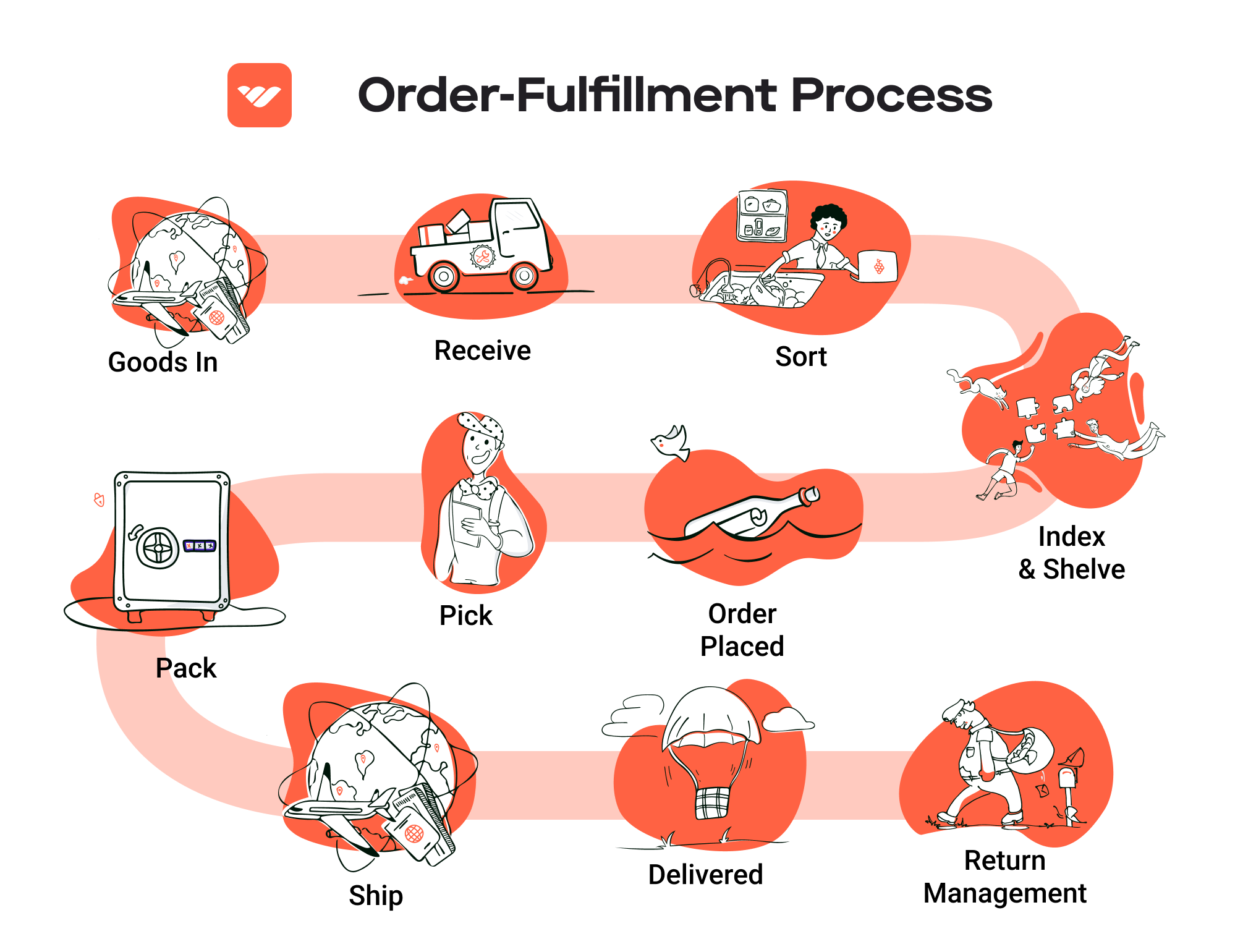
Key Term: Packing Slip – A document included in the package that lists the items contained within, serving as a receipt and helping customers verify their orders.
5. Shipping & Delivery
The final step in the order fulfillment process is shipping and delivery. Once packed, packages are loaded onto delivery vehicles and dispatched to their respective destinations. This stage often involves coordination with logistics providers or carriers, who manage the last-mile delivery to customers’ homes or businesses.
Importance: Timely and accurate delivery is crucial for customer satisfaction and can influence repeat business. Efficient shipping processes help maintain a competitive edge in the e-commerce landscape, where customers expect quick and reliable service.
Key Term: Last-Mile Delivery – The final step of the delivery process, where packages are transported from a distribution center to the end customer, often considered the most critical part of the logistics chain.
By understanding and optimizing each step of the order fulfillment process, e-commerce business owners and operations managers can enhance efficiency, improve customer satisfaction, and ultimately scale their operations effectively. Each phase plays a critical role in ensuring that products move seamlessly from the moment a customer clicks the ‘buy’ button to when they receive their order at their doorstep.
Comparing Fulfillment Models: In-House vs. 3PL vs. Dropshipping
Fulfillment Model Comparison
| Model | Who Handles Inventory | Best For (Business Stage) | Key Advantage | Key Disadvantage |
|---|---|---|---|---|
| In-House Fulfillment | The business itself | Established businesses | Full control over inventory and processes | Higher overhead costs and labor needs |
| Third-Party Logistics (3PL) | A third-party logistics provider | Growing and scaling businesses | Scalability and reduced operational burden | Less control over the fulfillment process |
| Dropshipping | Suppliers or manufacturers | Startups and small businesses | Low upfront investment and risk | Lower profit margins and longer shipping times |
In-House Fulfillment
In-house fulfillment refers to the process where an e-commerce business manages its own inventory, warehousing, and shipping operations. This model is best suited for established businesses that have the resources and infrastructure to handle logistics effectively. The key advantage of in-house fulfillment is that it allows businesses to maintain complete control over their inventory and processes. This means they can manage quality, speed of delivery, and customer service directly, which can lead to a better customer experience. However, this model also comes with significant disadvantages. The overhead costs can be high due to the need for warehousing space, staffing, and the investment in logistics technology. Moreover, as order volumes grow, businesses may find it challenging to scale operations quickly and efficiently without incurring additional costs or complexity.
Third-Party Logistics (3PL)
Third-party logistics (3PL) providers manage the warehousing, inventory, and shipping for businesses, allowing them to focus on core competencies such as marketing and product development. This model is particularly advantageous for growing and scaling businesses that may not have the resources to handle logistics internally. The key advantage of using a 3PL is scalability; businesses can easily adjust their logistics capacity in response to fluctuating demand without the significant capital investment required for in-house operations. Additionally, 3PLs often have established relationships with carriers and can negotiate better shipping rates, which can lower overall logistics costs. However, a notable disadvantage is that businesses relinquish some control over the fulfillment process, which can impact customer experience if the 3PL does not meet expectations. This model may also introduce complexities in communication and coordination, especially if the 3PL is located far from the business’s primary market.
Dropshipping
Dropshipping is a fulfillment model where the retailer does not keep goods in stock but instead transfers customer orders directly to a wholesaler or manufacturer, who then ships the products directly to the customer. This model is particularly well-suited for startups and small businesses that want to minimize upfront investment and risk. The key advantage of dropshipping is the low financial barrier to entry; businesses do not need to invest in inventory or warehousing, which allows them to offer a wide range of products without incurring significant costs. However, dropshipping also has its drawbacks. One major disadvantage is the lower profit margins, as suppliers typically charge higher wholesale prices for dropshipped products. Additionally, shipping times can be longer, and inventory management can be challenging since businesses often have limited visibility into their suppliers’ stock levels. This can lead to stockouts or delays that negatively affect customer satisfaction.
Conclusion
Selecting the right fulfillment model is crucial for e-commerce businesses looking to scale efficiently. Each model presents unique advantages and challenges, and the decision should align with the business’s current stage, resources, and long-term goals. In-house fulfillment offers control but at a higher cost, 3PL provides scalability with less operational burden, and dropshipping presents a low-risk entry point with some trade-offs in margins and shipping times. Understanding these dynamics can empower business owners and operations managers to make informed decisions that support growth and customer satisfaction in an increasingly competitive landscape.
A Deep Dive into Amazon FBA: Pros, Cons, and Who It’s For
Understanding Fulfillment by Amazon (FBA)
Fulfillment by Amazon (FBA) is a service provided by Amazon that allows e-commerce sellers to store their products in Amazon’s fulfillment centers. Amazon takes care of storage, packaging, and shipping of the products directly to customers. In addition to these logistics services, FBA also offers customer service and returns handling, enabling sellers to focus more on their business growth rather than the complexities of order fulfillment.
When a customer orders a product, Amazon picks, packs, and ships it on behalf of the seller. This seamless integration enables sellers to leverage Amazon’s vast distribution network, ensuring that products reach customers quickly and efficiently. Moreover, FBA products are eligible for Amazon Prime, which enhances visibility and sales potential.
How FBA Works
-
Setup: Sellers begin by creating an Amazon Seller account and enrolling in the FBA program. They list their products on Amazon and choose which items to fulfill through FBA.
-
Shipping Inventory: Sellers send their products to Amazon’s fulfillment centers. Amazon provides guidelines on how to prepare and package items to ensure they meet their standards.
-
Storage and Management: Once the products arrive, Amazon stores them in their warehouses. Sellers can monitor their inventory levels through the Amazon Seller Central dashboard.
-
Order Processing: When a customer places an order for an FBA product, Amazon automatically processes it. This includes picking the item from the shelf, packing it, and shipping it directly to the customer.
-
Customer Service and Returns: Amazon handles all customer inquiries and returns for FBA items, providing a smooth experience for both sellers and buyers.
Pros of Using FBA
-
Prime Eligibility: Products fulfilled by Amazon are eligible for Amazon Prime, which can significantly boost sales. Prime members often prefer to purchase Prime-eligible products due to the benefits of free and expedited shipping.
-
Customer Trust: Leveraging Amazon’s trusted brand can enhance customer confidence. Buyers are more likely to purchase from sellers using FBA due to Amazon’s reputation for reliable service and customer support.
-
Multi-Channel Fulfillment: FBA allows sellers to fulfill orders from other sales channels (like their own website or eBay) using Amazon’s logistics infrastructure. This capability can streamline operations and improve efficiency.
-
Scalability: FBA is designed to grow with your business. As order volume increases, Amazon’s infrastructure can accommodate additional inventory without requiring sellers to invest in their own warehousing.
-
Time Savings: Outsourcing fulfillment to Amazon frees up valuable time for sellers, allowing them to focus on marketing, product development, and customer engagement.
Cons of Using FBA
-
High Fees: FBA can be costly, especially for smaller sellers. Amazon charges various fees, including storage fees for inventory and fulfillment fees based on product size and weight. These costs can eat into profit margins.
-
Strict Inventory Rules: Amazon enforces strict inventory management rules. Sellers must adhere to guidelines regarding inventory limits, product preparation, and labeling. Non-compliance can result in additional fees or inventory removal.
-
Commingling Risks: FBA utilizes a commingling strategy, meaning that products from different sellers may be stored together. This can lead to issues with counterfeit products, as sellers risk having their inventory mixed with that of other sellers, potentially affecting their brand reputation.
-
Limited Control: By using FBA, sellers relinquish a degree of control over the fulfillment process. Quality issues, shipping delays, or errors in order processing can impact seller ratings and customer satisfaction.
-
Complex Returns Management: While Amazon handles returns, sellers may face challenges with returned products, especially if they receive items that are damaged or unsellable. Managing returns effectively while adhering to Amazon’s policies can be cumbersome.
Who is FBA Best For?
Fulfillment by Amazon is particularly beneficial for:
-
Small to Medium-Sized E-commerce Businesses: Businesses looking to scale quickly without investing heavily in logistics infrastructure can greatly benefit from the FBA model.
-
Sellers with High Sales Volume: Sellers who experience a high volume of orders can leverage FBA to streamline their fulfillment process and focus on growth rather than logistics.
-
Retailers Seeking Prime Access: Those aiming to tap into the lucrative Amazon Prime customer base will find FBA invaluable for enhancing product visibility and sales potential.
-
Entrepreneurs Focused on Growth: Sellers who wish to minimize operational burdens and scale their business efficiently will appreciate the time savings and support offered through FBA.
-
Multi-Channel Sellers: Businesses that sell through various platforms and want to centralize fulfillment operations will find FBA’s multi-channel capabilities advantageous.
In conclusion, while Fulfillment by Amazon offers significant advantages in terms of access to Amazon’s vast logistics network and customer trust, it is essential for potential users to carefully weigh the costs and operational implications. Understanding both the benefits and challenges can help e-commerce businesses make informed decisions about whether FBA aligns with their growth strategy.
Core Services Offered by Fulfillment Centers
Inventory Management & Warehousing
Inventory management and warehousing form the backbone of any fulfillment center’s operations. These services involve the systematic handling and storage of products, ensuring that businesses maintain optimal stock levels while minimizing costs.
In a fulfillment center, inventory management utilizes advanced software systems to track stock levels, monitor product movements, and forecast demand. This technology allows e-commerce businesses to avoid stockouts and overstock situations, which can lead to lost sales or excess holding costs. For example, with real-time inventory tracking, a business can quickly identify when to reorder products, maintaining a seamless supply chain.
The benefits of efficient inventory management and warehousing include reduced operational costs and improved order fulfillment speed. By storing products in a strategically located fulfillment center, businesses can significantly decrease shipping times to customers, enhancing customer satisfaction and loyalty. Moreover, a well-organized warehouse can facilitate faster picking and packing processes, further optimizing the fulfillment cycle.
Pick and Pack Services
Pick and pack services are critical in transforming inventory into delivered goods. This process involves selecting (picking) the right products from the warehouse and packaging (packing) them for shipment to customers.
Fulfillment centers employ skilled staff and automated systems to ensure accurate order picking. Each order is carefully assembled to meet specific customer requests, which might include bundling multiple products or including promotional materials. The packing phase focuses on ensuring that items are securely packaged to prevent damage during transit.
The primary benefit of efficient pick and pack services is the speed and accuracy of order fulfillment. When orders are picked and packed promptly, it leads to faster dispatch times, which is essential in today’s e-commerce environment where customers expect quick delivery. Furthermore, accurate order fulfillment reduces the likelihood of returns due to incorrect shipments, thereby enhancing overall customer satisfaction and reducing operational costs associated with returns processing.
Kitting and Assembly
Kitting and assembly refer to the process of creating bundled products or assembling components into a finished product before shipping. This service is particularly beneficial for e-commerce businesses that sell products requiring assembly or those that offer promotional bundles.
In a fulfillment center, kitting involves gathering various items into one package, which can include promotional items or complementary products. For example, if a business sells a skincare set, the fulfillment center can bundle different products into a single kit, ready for shipment. Assembly services may also include putting together furniture or electronic items, where multiple components need to be combined.
The advantage of kitting and assembly services lies in the ability to offer customers unique product combinations and enhance their shopping experience. This service not only saves time for the business but also allows for creative marketing strategies, such as limited-time offers on bundled products. Additionally, having these services managed by a fulfillment center can streamline the operations, enabling businesses to focus on core activities like marketing and customer service.
Returns Management (Reverse Logistics)
Returns management, often referred to as reverse logistics, is an essential service provided by fulfillment centers to handle product returns efficiently. This process involves the systematic handling of returned items, from receiving and inspecting them to restocking or disposing of them appropriately.
A robust returns management system enables e-commerce businesses to process returns quickly and effectively. Fulfillment centers can assess returned products to determine their condition and whether they can be restocked, repaired, or need to be discarded. This process is critical for maintaining inventory accuracy and minimizing losses associated with returned goods.
The benefits of effective returns management are multifaceted. Firstly, it enhances customer satisfaction, as a seamless return process encourages customers to make purchases with confidence, knowing they can easily return items if needed. Secondly, efficient handling of returns can improve cash flow, as products are quickly assessed and reintegrated into inventory. Lastly, a well-managed returns process can provide valuable insights into product quality and customer preferences, informing future business decisions.
In conclusion, partnering with a fulfillment center that offers comprehensive services such as inventory management, pick and pack, kitting and assembly, and returns management can significantly enhance the operational efficiency of e-commerce businesses. By leveraging these services, companies can scale their operations, reduce costs, and ultimately improve customer satisfaction in a competitive marketplace.
How to Choose a Fulfillment Partner: A 6-Point Checklist
Location & Warehouse Network
When selecting a fulfillment partner, the location of their warehouses is paramount. A strategically placed fulfillment center can significantly reduce shipping times and costs, enhancing customer satisfaction.
Why It Matters:
Proximity to your primary customer base can lead to faster delivery times, which is increasingly important in the e-commerce space. Additionally, consider the partner’s network of warehouses; a broad network allows for more flexible shipping options and can facilitate easier inventory management.
Questions to Ask:
– Where are your fulfillment centers located?
– How do you determine the best warehouse for shipping to my customers?
– Do you have multiple facilities to cover different regions effectively?
Technology & Integrations
A fulfillment partner’s technology capabilities are crucial for seamless operations. The integration of inventory management systems, order processing, and shipping software can streamline your logistics.
Why It Matters:
Advanced technology can provide real-time tracking, inventory visibility, and automated order processing, making your operations more efficient. This is particularly important for businesses looking to scale, as robust technology can handle increased order volumes without compromising service quality.
Questions to Ask:
– What technology platforms do you use for order management and inventory tracking?
– Can your systems integrate with my existing e-commerce platform (e.g., Shopify, WooCommerce)?
– Do you provide real-time reporting and analytics for order fulfillment?
Specializations (e.g., Cold Storage, Oversized Items)
Depending on your product line, you may need a fulfillment partner with specialized capabilities. This could include cold storage for perishables or handling oversized items.
Why It Matters:
Choosing a partner with the right specializations ensures that your products are stored and handled correctly, which is essential for maintaining product quality and compliance with regulations.
Questions to Ask:
– Do you have facilities that cater to specific product types (e.g., temperature-controlled storage)?
– How do you handle the storage and shipping of oversized items?
– What measures do you take to ensure product integrity during storage and transit?
Scalability & Capacity
As your business grows, your fulfillment needs will evolve. A suitable partner should be able to scale operations to match your growth trajectory.
Why It Matters:
Having a partner that can quickly adapt to changing demands—whether it’s seasonal spikes or long-term growth—can save you from logistical headaches and unexpected costs.
Questions to Ask:
– How do you manage peak seasons and fluctuating order volumes?
– What is your current capacity, and how do you plan to accommodate future growth?
– Can you provide examples of how you’ve scaled operations for other clients?
Pricing and Contracts
Understanding the pricing structure and contract terms is crucial for budgeting and avoiding hidden fees.
Why It Matters:
Transparent pricing helps you manage your logistics costs effectively, which is essential for maintaining healthy profit margins. Additionally, the terms of the contract can affect your flexibility and long-term relationship with the partner.
Questions to Ask:
– Can you provide a detailed breakdown of your pricing structure?
– Are there any additional fees for services such as storage, handling, or returns?
– What are the terms for contract renewal or cancellation?
Customer Support & Reviews
The quality of customer support can significantly impact your experience with a fulfillment partner. Responsive and knowledgeable support can help you navigate challenges quickly.
Why It Matters:
Good customer support ensures that issues are resolved efficiently, minimizing disruptions to your operations. Additionally, reviews and testimonials can provide insight into the partner’s reliability and service quality.
Questions to Ask:
– What support channels do you offer (e.g., phone, email, chat)?
– Can you provide references or case studies from current clients?
– How do you handle customer complaints or service disruptions?
Conclusion
Choosing the right fulfillment partner is a critical decision that can influence your e-commerce business’s success. By carefully considering the factors outlined in this checklist, you can select a partner that aligns with your operational needs and growth ambitions. Remember, the right partner not only supports your logistics but also enhances your overall customer experience, helping you scale effectively in a competitive marketplace.
Understanding Fulfillment Pricing: A Breakdown of Common Fees
Initial Setup Fees
Initial setup fees are typically charged when you first engage a fulfillment service provider. These fees can vary widely based on the complexity of your operations and the specific services you require. Common components of initial setup fees may include account creation, system integration, and initial inventory assessment.
For example, if you are integrating your e-commerce platform with the fulfillment center’s inventory management system, there may be a one-time charge for the technical work involved. Additionally, if the fulfillment center needs to assess and categorize your products for storage and handling, this may incur further costs. Generally, initial setup fees can range from a few hundred to several thousand dollars, depending on your needs and the provider’s capabilities.
Receiving Fees
Receiving fees are charged for the process of accepting and processing your inventory when it arrives at the fulfillment center. This fee typically covers the labor and resources needed to unload, inspect, and store your products.
Calculating receiving fees often involves factors such as the volume of goods received and the complexity of handling. For instance, if your products require special handling or inspection, you might pay more. Generally, receiving fees can be structured as a per-unit fee or a flat fee based on the shipment size, with costs often ranging from $0.25 to $2.00 per item.
Storage Fees (per pallet/bin)
Storage fees are incurred for the space your inventory occupies within the fulfillment center. These fees can be calculated on a per-pallet or per-bin basis, depending on how your products are stored.
Typically, storage fees are charged monthly and are influenced by factors such as the size of the product, the duration of storage, and the specific storage conditions required (e.g., temperature control). For example, standard dry storage may cost less than refrigerated storage. On average, businesses might expect to pay anywhere from $15 to $40 per pallet per month, or $2 to $5 per bin, depending on the provider’s pricing structure.
Pick & Pack Fees (per item/order)
Pick and pack fees cover the labor involved in selecting items from inventory (picking) and packaging them for shipment (packing). This fee can be structured per item or per order, depending on the fulfillment provider.
The calculation of pick and pack fees typically considers the number of items in each order and the complexity of the packing process. For example, if your products require special packaging or labeling, this may increase the fee. On average, you can expect to pay between $1.00 and $3.00 per item or a flat fee of $2.00 to $5.00 per order, which includes picking and packing multiple items.
Shipping Fees
Shipping fees are one of the most significant costs associated with fulfillment. These fees depend on various factors, including the destination, weight, dimensions of the package, and the shipping method selected (standard, expedited, etc.).
Fulfillment centers often have negotiated rates with shipping carriers, which can result in lower shipping costs for businesses. However, it is essential to understand how these fees are calculated to avoid unexpected charges. Shipping fees can vary widely, with costs often ranging from $5 to $20 for standard shipping, depending on the factors mentioned above.
Tips for Getting an Accurate Quote
To obtain an accurate quote for fulfillment services, consider the following steps:
-
Provide Detailed Information: Be ready to share specifics about your product dimensions, weights, and any special handling requirements. The more precise you are, the more accurate the quote will be.
-
Understand Your Needs: Clearly outline your expected order volume, storage duration, and shipping frequency. This information helps fulfillment centers provide tailored pricing.
-
Ask About All Fees: Inquire about all potential fees, including hidden charges that may not be immediately obvious, such as returns processing or additional packaging.
-
Negotiate Terms: Don’t hesitate to negotiate fees, especially if you expect high volumes or long-term partnerships. Many providers are open to adjusting their pricing based on your business potential.
-
Seek Multiple Quotes: Compare quotes from various fulfillment providers to ensure you receive competitive pricing and services that align with your business needs.
By understanding these common fulfillment pricing models and following these tips, you can better navigate the costs associated with utilizing a fulfillment center, ultimately leading to more informed and strategic business decisions.
Frequently Asked Questions (FAQs) about Fulfillment
1. What is the role of the Amazon Fulfillment Center in Memphis, TN?
The Amazon Fulfillment Center in Memphis plays a critical role in the e-commerce giant’s logistics network. It specializes in storing, packing, and shipping a diverse range of products, ensuring efficient order fulfillment and timely delivery to customers. The facility utilizes advanced technology and processes to manage inventory and streamline operations, contributing significantly to Amazon’s commitment to fast shipping.
2. How does the fulfillment process work at the Memphis centers?
At the Amazon Fulfillment Centers in Memphis, products arrive from various suppliers and are stored until ordered. When an order is placed, items are picked, packed, and labeled for shipment. The packed orders are then loaded onto delivery vehicles for distribution. This process is enhanced by automated systems and a dedicated workforce, enabling the centers to process tens of thousands of packages daily.
3. What types of products are stored at the Amazon Fulfillment Center in Memphis?
The Memphis Fulfillment Centers store a wide variety of products, ranging from electronics and household goods to clothing and toys. This diverse inventory allows Amazon to meet the demands of its extensive customer base efficiently.
4. What’s the difference between a warehouse and a fulfillment center?
A warehouse primarily focuses on storing goods, while a fulfillment center is specifically designed to handle the complete order fulfillment process. This includes receiving inventory, processing orders, packing items, and shipping them directly to customers. Fulfillment centers often employ advanced technology to optimize these processes, ensuring faster delivery times.
5. What is a Third-Party Logistics (3PL) provider?
A Third-Party Logistics (3PL) provider is a company that offers outsourced logistics services to businesses. This can include warehousing, inventory management, order fulfillment, and transportation services. Utilizing a 3PL allows businesses to focus on core operations while leveraging the expertise and resources of logistics professionals.
6. How much do fulfillment services cost?
The cost of fulfillment services can vary widely based on several factors, including the volume of orders, the types of products being shipped, and the specific services required (such as kitting or returns processing). Generally, businesses can expect to pay for storage fees, pick and pack fees, and shipping costs. It’s essential to request quotes from multiple providers to find a solution that fits your budget.
7. How does Amazon ensure the safety of its workers at the fulfillment centers?
Amazon prioritizes workplace safety through various measures, including regular safety training, strict adherence to safety protocols, and the use of advanced technology to minimize risks. The company actively listens to employee feedback regarding safety concerns and implements improvements as necessary.
8. What are the benefits of using an Amazon Fulfillment Center for my e-commerce business?
Utilizing an Amazon Fulfillment Center provides several advantages, including access to Amazon’s extensive logistics network, fast and reliable shipping options, and the ability to scale operations without significant upfront investments in warehousing. Additionally, businesses can benefit from Amazon’s customer service and return management systems.
9. Are there any specific requirements to partner with Amazon Fulfillment Centers?
To partner with Amazon Fulfillment Centers, businesses typically need to register as a seller on Amazon’s platform and meet certain criteria related to inventory management and order fulfillment processes. It’s advisable to review Amazon’s guidelines for sellers to understand the specific requirements and best practices.
10. Can I track my shipments from the Memphis Fulfillment Center?
Yes, Amazon provides tracking information for all shipments processed through its Fulfillment Centers, including those in Memphis. As a seller, you can access tracking details through your Amazon Seller Central account, and customers can track their orders via the Amazon website or app, ensuring transparency throughout the shipping process.
Conclusion: Is Outsourcing Fulfillment the Right Move for Your Business?
The Strategic Advantage of Outsourcing Fulfillment
As e-commerce continues to evolve, the decision to outsource fulfillment can be pivotal for businesses aiming for growth. Partnering with a fulfillment service, such as those operating in Memphis, offers several key advantages that can enhance your operational efficiency and customer satisfaction.
Firstly, outsourcing fulfillment saves time. By leveraging the expertise of fulfillment centers, your business can streamline order processing, inventory management, and shipping logistics. This allows you to focus on core activities such as marketing and product development, rather than getting bogged down in the complexities of logistics.
Secondly, scalability is a significant benefit. As demand fluctuates, fulfillment centers provide the flexibility to scale operations up or down without the burden of investing in infrastructure or labor. This agility is crucial for businesses looking to expand into new markets or respond to seasonal demands, ensuring you can meet customer expectations without compromising service quality.
Moreover, partnering with experienced fulfillment services means accessing their logistical expertise and advanced technology. Facilities like Amazon’s in Memphis utilize cutting-edge systems to manage inventory and expedite shipping, which can enhance your overall operational efficiency and reduce error rates.
However, the success of outsourcing fulfillment hinges on selecting the right partner. It’s essential to evaluate potential fulfillment services based on their capabilities, technological infrastructure, and alignment with your business goals. A well-chosen partner can propel your business forward, while a poor fit can hinder growth.
Call to Action
Now is the time to assess your current shipping and fulfillment processes. Conduct an audit to identify bottlenecks or inefficiencies that may be holding your business back. Explore whether a fulfillment partner could be the strategic solution you need to enhance your operations and drive growth. By making informed decisions today, you can position your business for success in the competitive e-commerce landscape.
Important Disclaimer
⚠️ Important Disclaimer
The information in this guide is for educational purposes. Fulfillment services, pricing, and platform features change frequently. Always conduct your own due diligence and consult with providers directly before making business decisions.
